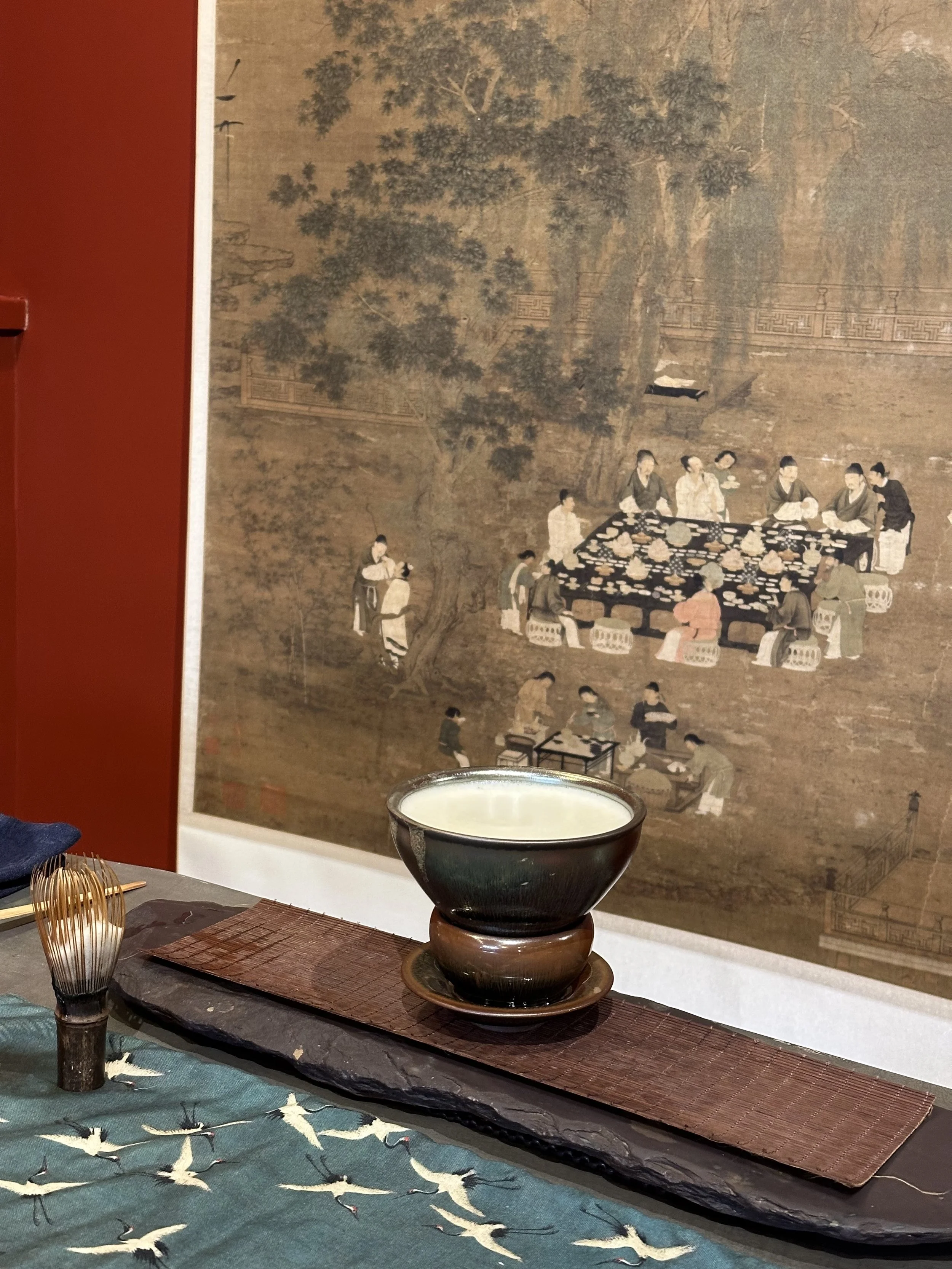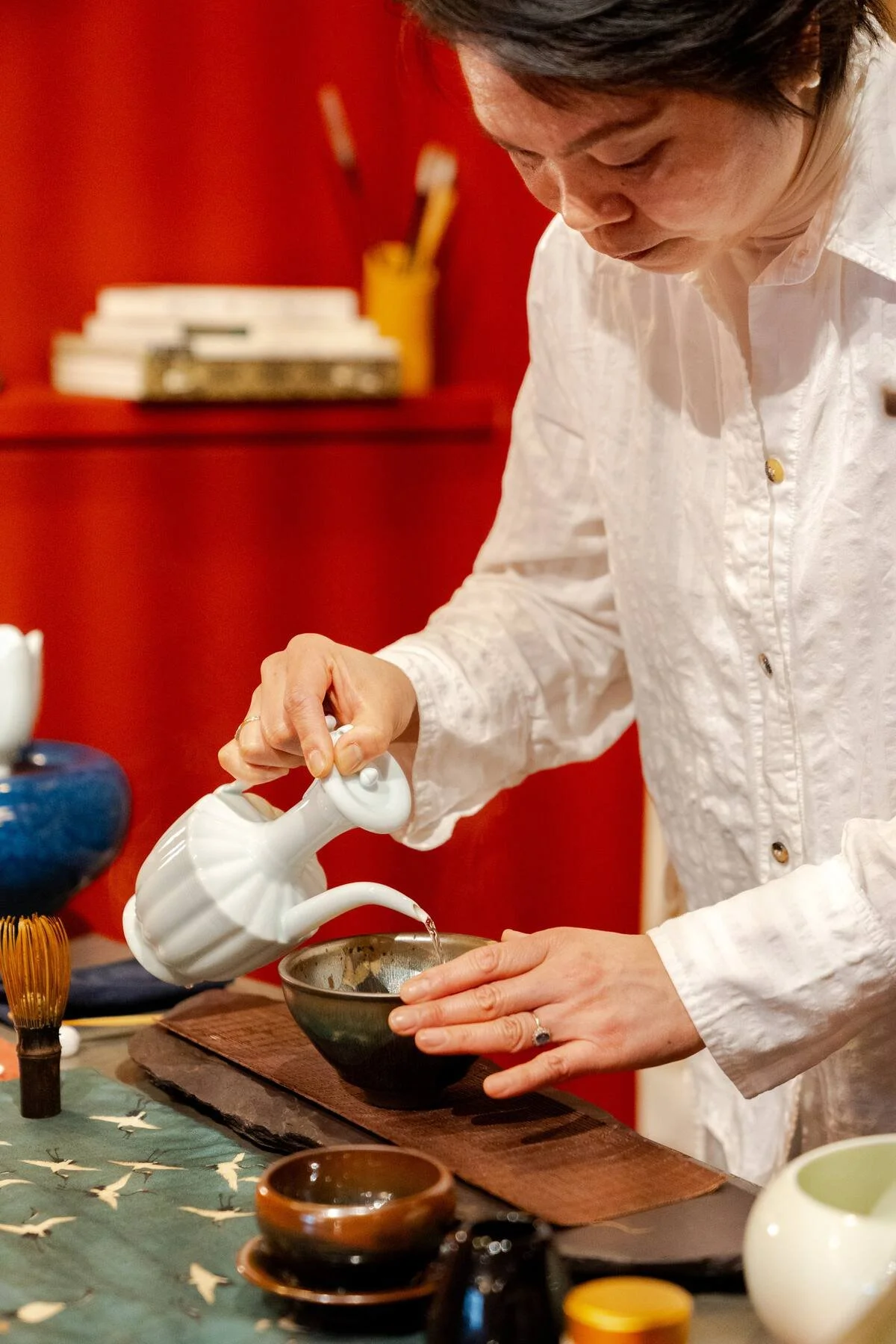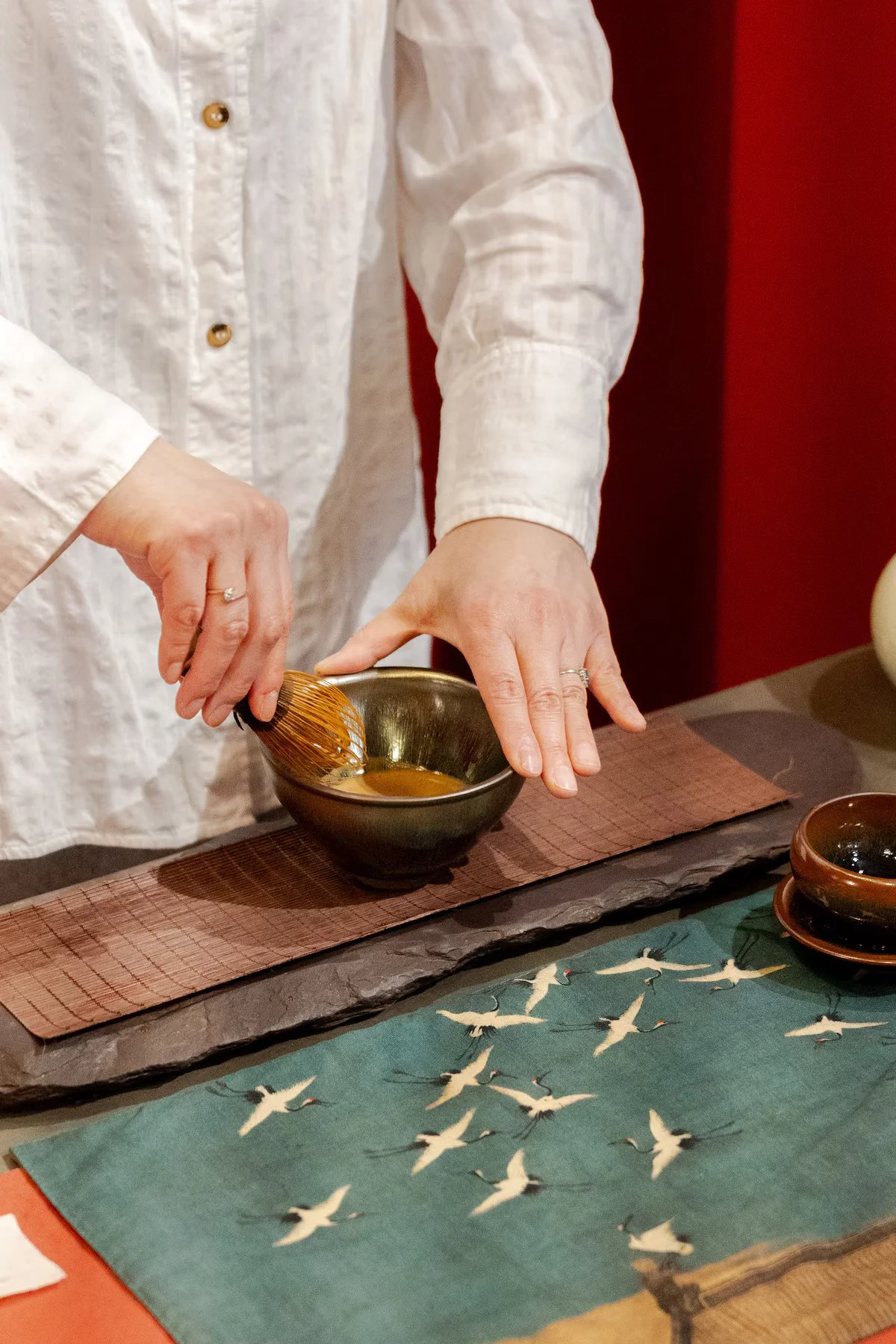SONG DYNASTY WHISKED TEA
宋代點茶
ORIGINS
From its early medicinal roots, tea spread across China as an aid for meditation during the 唐代 Tang Dynasty. From those early buds, tea culture absolutely blossomed in the 宋代 Song Dynasty—a time of deep thought, poetry, philosophy, and art. The Song aristocracy pursued the pinnacle of elegance with the whisked tea style. They sought the finest, most delicate standard, fostering a contemplative and withdrawn lifestyle amongst the imperial family.
Even with the highest rank as emperor, Zhao Ji 趙佶 Song Huizong personally grinded his own tea, whisked, and shared it, once saying ever so poetically, 「此自布茶」: “Here is my own expression of the tea ritual: how I am in tea.” He loved the process so dearly that he even wrote 大觀茶論; this very famous book entitled DaGuan Tea Theory meticulously describes the exquisite art of whisked tea and the subtleties of a technique known as 七湯點茶法 or the Seven-Boil Whisked Tea Method.
THE CEREMONY
The tea master begins this ceremony by waking up the 熁碗 or “harmonious bowl” with boiling water. With delicate precision, she scoops tea powder with a teaspoon, placing small mounds in the middle of the empty bowl. Using a traditional hot water pitcher known as 湯瓶, she pours a splash and begins whisking. There are two different whisking techniques in this ceremony: 運筅 running the bamboo whisk around the bowl and 擊拂 striking the liquid to and fro. From the whisking, the water rejuvenates the tea as they form a perfect union and blossom into an exquisite foam delicate as fresh snowfall along the surface. This foam is called 茶乳 or the milk of the tea.
The tea master repeats the process, alternating between adding water along the liquid’s rising horizon and whisking. By the third round, the froth washes ashore the sides of the bowl. While some consider three rounds to be satisfactory, the true traditional ceremony requires seven—accumulating 200 whisks. As the tea master’s attention and posture is utterly receptive to the tea, her hand and the whisk become one—a conduit for the tea’s energy.
SIGNIFICANCE OF TEAWARE
If whisked in a cyan tea bowl, the delicate pure white color will be lost. A black tea bowl ought to be used to best accentuate the tea’s natural beauty. Therefore, the Song people regarded the construction of the bowl with utmost importance. The Song people most admired the 兔毫建盞 or Rabbit Hair Glazed Bowl. Cai Xiang 蔡襄 of the Song Dynasty commented in his famous book 茶錄 or The Record of Tea: "The tea’s color is white, and it is suitable for black cups. The ones made by 建瓯 [Jian'ou, Fujian] are cyanotic and black, with patterns like rabbit hairs. The clay used is thick, so that once it heats, it takes a long time to cool back down.”
IN ESSENCE
This highly intricate ceremony truly reveals the tea’s pure, natural, earthy essence while simultaneously surfacing the silky, soft, pearly foam of delicate sweetness. It’s truly the most beautiful taste that just melts in your mouth.






